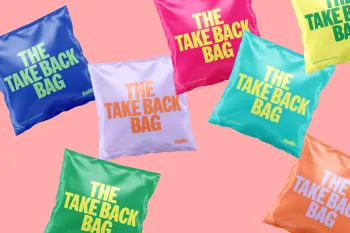Scientists have discovered that our roads and parking lots are silently contributing to plastic pollution.
A new study published in the Journal of Hazardous Materials demonstrated that pavement surfaces release tiny plastic particles, known as microplastics, into stormwater runoff as they wear down from everyday use.
What's happening?
Researchers from the University of Toronto found that different types of pavement — asphalt, concrete, and recycled rubber — all release microplastics as they degrade. Lab testing revealed that rubber pavement releases the most microplastics, while field studies showed asphalt surfaces generated higher concentrations in real-world conditions.
The researchers examined both laboratory samples and real-world stormwater runoff from different pavement types, analyzing thousands of particles to understand their compositions and sources. The team found that up to 82% of particles from asphalt lots were confirmed as human-made materials that never break down in nature.
While scientists have long known that tire particles contribute to microplastic pollution, this study demonstrates that pavement materials themselves also release microplastic particles as they wear down over time, contributing to the growing burden of plastic pollution in our urban environments.
"We directly demonstrated that pavement wear is a source of microplastics in stormwater separate from tire wear," the study said. "... These results demonstrate the need to consider microplastic generation during pavement material selection and mitigate the spread of microplastics from pavement wear to nearby environments."
Why is pavement-generated microplastic pollution important?
These findings highlight a previously overlooked source of contamination that enters our waterways through stormwater runoff. When rain washes over our roads and parking lots, it carries these tiny plastic particles into storm drains, which lead to our rivers, lakes, and oceans.
These microplastics enter the food chain when consumed by fish and other aquatic life, creating risks for wildlife and human health. Research has shown these particles can make their way into drinking water systems and accumulate in soil when contaminated water is used for irrigation.
What's being done about pavement-generated microplastics?
The study authors emphasized the need to carefully evaluate pavement materials — especially new products that show high microplastic release levels in testing — before adopting them widely. They suggested future research can explore whether natural alternatives such as cellulose could replace plastic additives while maintaining pavement performance.
|
What should America do to fight plastic pollution?
Click your choice to see results and speak your mind. |
While the problem of pavement-sourced microplastics requires large-scale solutions, individuals can also help reduce our plastic pollution by making eco-conscious choices. Switching to reusable items over single-use plastics, properly disposing of waste, and supporting local initiatives for environmentally friendly infrastructure can all help to create meaningful change in our communities.
Join our free newsletter for good news and useful tips, and don't miss this cool list of easy ways to help yourself while helping the planet.









